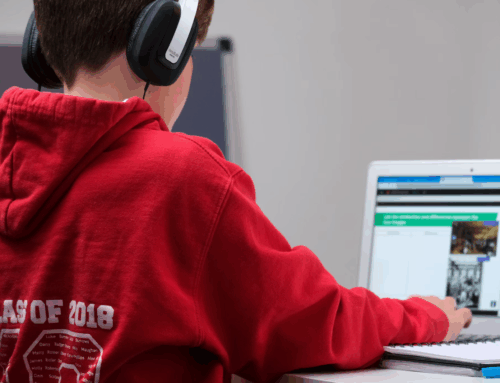 From an early age, it is vital to anyone’s psychological growth to have the ability to understand others’ mental states, and the understanding that others have differing beliefs, desires, intentions, and perspectives that are different from one’s own. This is the basis of social interaction and is known as theory of mind—in psychological terms.[1] To develop empathy and foster an empowering classroom, the development of this concept is essential to a students’ psyche. That is why helping students develop their emotional intelligence (including theory of mind) in educational settings from a young age is paramount to not only having conducive learning environments and experiences, but to producing a better environment for students’ mental health.
From an early age, it is vital to anyone’s psychological growth to have the ability to understand others’ mental states, and the understanding that others have differing beliefs, desires, intentions, and perspectives that are different from one’s own. This is the basis of social interaction and is known as theory of mind—in psychological terms.[1] To develop empathy and foster an empowering classroom, the development of this concept is essential to a students’ psyche. That is why helping students develop their emotional intelligence (including theory of mind) in educational settings from a young age is paramount to not only having conducive learning environments and experiences, but to producing a better environment for students’ mental health.
What is Emotional Intelligence?
Emotional intelligence is the ability to identify and manage one’s own emotions, as well as others. It is generally said that emotional intelligence includes a few skills: emotional awareness (the ability to identify and name one’s own emotions), the ability to apply such emotions to tasks like problem-solving and thinking, and the ability to manage or regulate emotions, including one’s own and others.[2] Much of the empathetic basis of emotional intelligence is tied to one’s theory of mind, given the latter concept’s emphasis on understanding others perspectives. Developmentally, it is typical for children to start forming theory of mind at around 18 months old and progressing to a solid concept by the age of 3–4 years old.[3] These are the pre-kindergarten years, where much of the responsibility of rearing a child’s psyche and conducting social interactions mainly falls upon their caretakers. But that does not mean that their educators should let parents shoulder all this responsibility. Teaching extends outside just academics; educators should also hope to nurture student’s social and emotional skills. That is why helping develop emotional intelligence in the classroom should be integral to all educator’s goals.
Why Emotional Intelligence Matters in the Classroom
Research demonstrates that a positive correlation exists between emotional intelligence and academic success. Higher rates of emotional intelligence in students show students that tend to be more engaged in learning, exhibit better classroom behavior, and achieve higher grades. School-based interventions that focus on emotional and social learning significantly improve student’s academic performance.[2] Based on common sense alone, it would be hard to argue that helping teach a student how to regulate their emotions would not lead to higher rates of positive academic achievement.
Methods of Teaching Emotional Intelligence
There are various ways that educators can foster emotional intelligence in their classrooms. To integrate emotional intelligence in students, it would be wise to look at the pillars of its definition: self awareness, social awareness, and emotional regulation. For the cultivation of self awareness, teachers can have students conduct exercises such as mood-tracking through journaling and other methods of self-reflection like art, to help students identify and express their emotions. The cultivation of social awareness too is extremely important not just for students’
emotional intelligence, but for the development of early school readiness, or a pre-kindergarten child’s readiness to begin education.[4] This can be achieved through activities that encourage empathy, such as games, and perspective-taking, such as students sharing personal anecdotes to foster an environment where they are compelled to consider others perspectives. In terms of emotional regulation, exercises in mindfulness, deep-breathing techniques, or certain cognitive-behavioral strategies are all well-known methods of improving emotional self-regulation. Of course, if a student’s emotions and behaviors appear to be larger than one can handle as an educator and reflective of something outside the classroom, an educator or teacher should seek further behavioral intervention to help prevent any further problematic emotional development.
Teachers and educators should remember that besides instilling knowledge, their responsibilities as individuals who help shape young minds extends beyond just promoting high academic achievement. These responsibilities include helping students build their emotional intelligence and foster communities of empathy and are necessary not just because they bolster academic success, but because they prepare students for lives outside the classroom and build relationships with the world around them.
[1] https://www.simplypsychology.org/theory-of-mind.html
[2] https://www.psychologytoday.com/us/basics/emotional-intelligence
[3] https://www.nature.com/articles/pr92011100#:~:text=Normally%20developing%20children%20attain%20ToM,4%2C5%2C7
[4] https://srcd.onlinelibrary.wiley.com/doi/abs/10.1002/j.2379-3988.2002.tb00041.x




